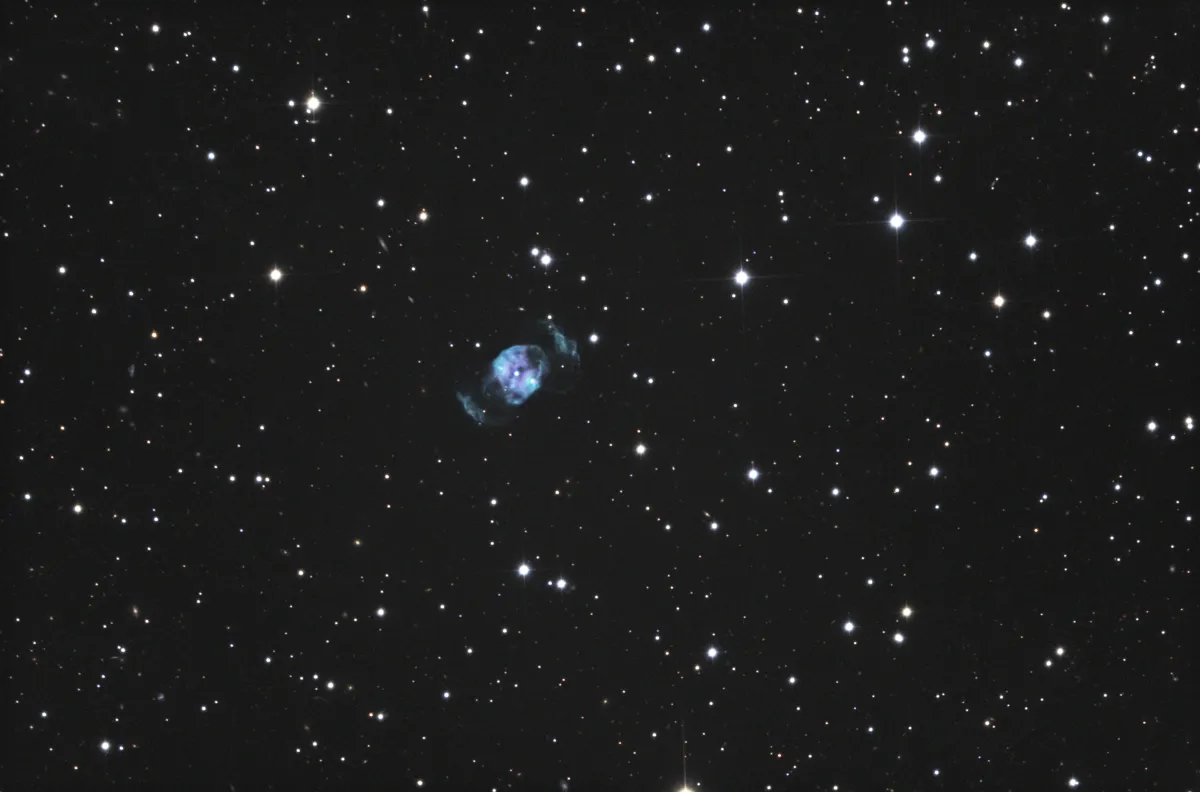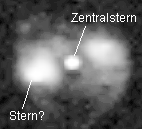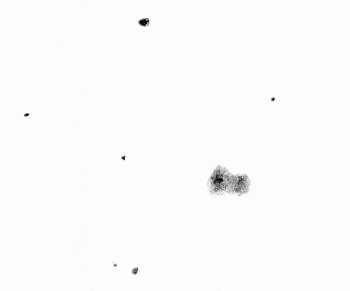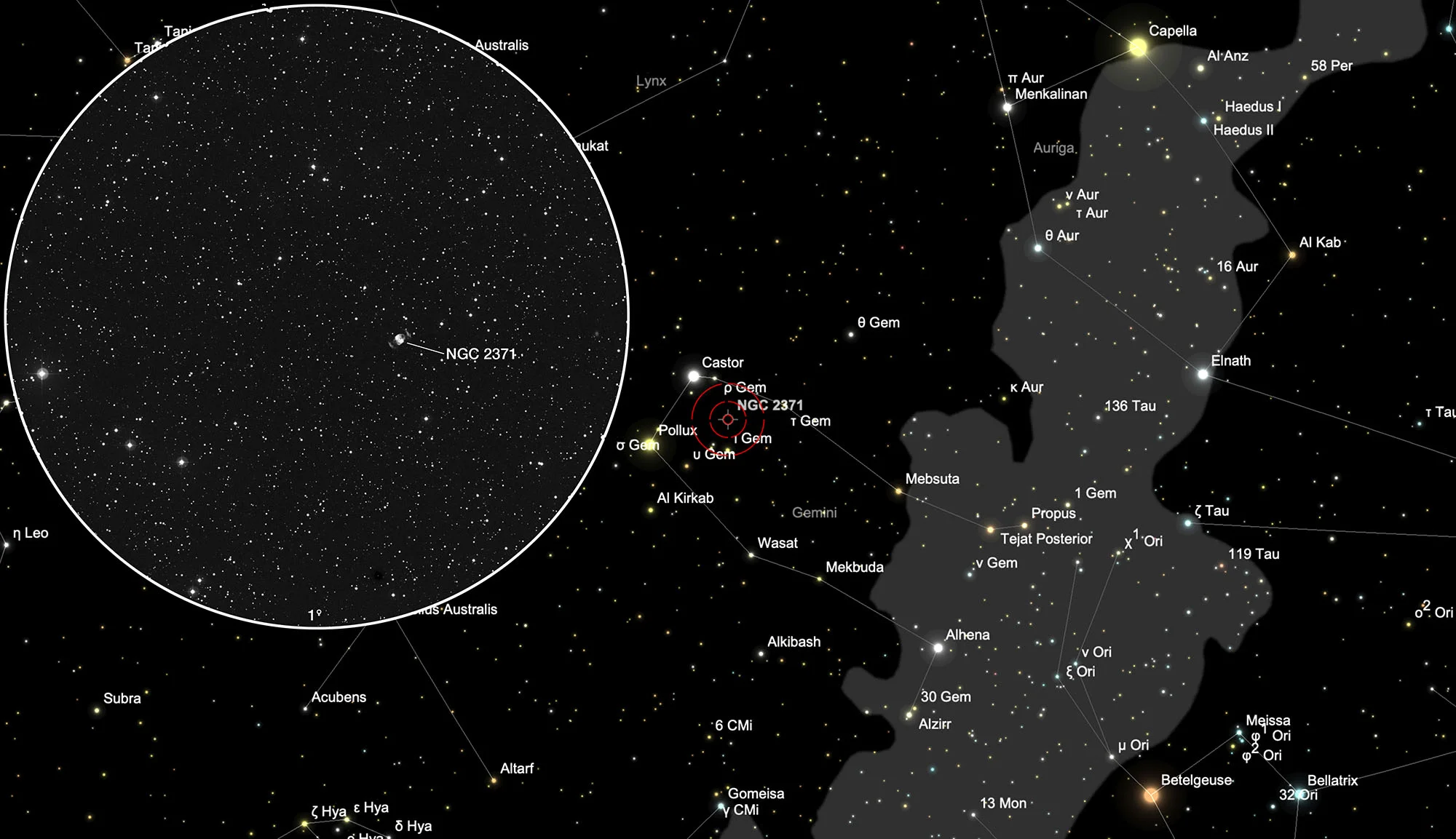Peanut Nebula (NGC 2371/2)

Object Description
The nebula was discovered on 12 March 1785 by William Herschel. But he spotted two separate nebulae and cataloged them as II 316 and II 317 (class II = faint nebulae). He described them as follows: «Two, south preceeding north following, distance 1' chevelure mix. Both faint, small, equal, having a nucleus or bright compressed spot». [463] Those later became NGC 2371 and NGC 2372. In 1917 it was identified as a planetary nebula by Francis G. Pease. [141]
At first glance, the elongated or even two-part structure is particularly striking. This is the reason why there are two entries in the NGC catalog for this object: 2371 and 2372. The outer ends, which are brighter than the inner area, can under certain circumstances simulate the double nature. In reality, however, it is one and the same planetary nebula - this is confirmed in the 20 cm reflector but probably also in smaller telescopes. The sight most closely resembles a peanut, for lack of another name I call NGC 2371/2 the Peanut Nebula.

In the Vorontsov-Velyaminov classification system, the form is given as IIIa+VI. IIIa stands for an irregular disk with a very uneven brightness distribution and refers to each of the two halves; VI means that the nebula has an anomalous shape, this applies to the whole object.
At around 10'000 years old, this is a relatively old planetary nebula. Despite its age, the surface temperature of the central star is still around 100'000 Kelvin.
Figure 1 also shows the outer areas. Are these denser regions of an older shell, or is there a bipolar stellar wind emanating from the central star that is causing large parts of the nebula to expand more?
| Designations | PN G189.1+19.8: NGC 2371-72, PK 189+19.1, ARO 45, VV 37, VV' 61 |
| Right Ascension (J2000.0) | 07h 25m 35s |
| Declination (J2000.0) | +29° 29' 36" |
| Dimensions | 44." (optical) |
| Distance | 1.64 kpc |
| Radial Velocity | +20.6 ± 2.7 km/s |
| Expansion Velocity | 42.5 (O-III) km/s |
| C-Star Designations | AG82 80 |
| C-Star Magnitude | U: 13.28, B: 14.48, V: 14.85 |
| C-Star Spectral Type | O VI, WC early |
| Discoverer | PEASE 1917 |
How to find the Peanut?
This object is extremely easy to find even without a Telrad finder: Adjust the 3.8mag star Propus (ι Geminorum) and swivel 1° 40' in declination to the north and the nebula should already be in the field of view of a low power wide-angle eyepiece. The best viewing time is September to June.
Visual Observation

200 mm aperture: With a magnification of 140x, the «peanut shape» comes into its own in the 8-inch model. You can also see some structure in the nebula. The western half appears somewhat brighter and larger than the eastern. In addition, I had the impression that the western part of the nebula is overlaid by a star. However, it is not the central star, which is located between the two halves at almost 15th magnitude and can also be seen on the CCD image of the inner area (see Fig. 2). Even if NGC 2371/2 does not appear very bright at medium magnification, it is worth zooming in. The resolution of the eye is much lower in dim light. It is therefore necessary to magnify to see details. At 226x, despite the moon (approx. 36 percent), I recognized significantly more structure than at 140x. — 1996, Philipp Reza Heck
762 mm aperture: Without a nebula filter (first tried with UHC) the Peanut Nebula NGC 2371 shows both bright parts of the nebula as one peanut each. The central star in between only became really visible without a filter. — 30" f/3.3 Slipstream Dobsonian, Hasliberg Reuti, 5. 3. 2022, Eduard von Bergen
